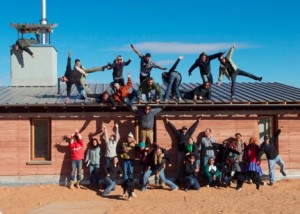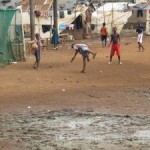SCC – The Continuing Expansion Of Favelas In Rio De Janeiro, Brazil
![]() June 2014. Despite the lack of official figures, the sense of community leaders and residents of the Ladeira dos Tabajaras and Morro dos Cabritos favelas in Copacabana (a neighborhood in Rio de Janeiro), is that the local population has increased substantially, especially after the creation of the Pacifying Police Unit (UPP) in 2010. Longstanding problems such as poor access to health and sanitation, worsened with the arrival of new residents, who in many cases, lived on asphalt prior to their arrival.
June 2014. Despite the lack of official figures, the sense of community leaders and residents of the Ladeira dos Tabajaras and Morro dos Cabritos favelas in Copacabana (a neighborhood in Rio de Janeiro), is that the local population has increased substantially, especially after the creation of the Pacifying Police Unit (UPP) in 2010. Longstanding problems such as poor access to health and sanitation, worsened with the arrival of new residents, who in many cases, lived on asphalt prior to their arrival.
For example, the João Barros Barreto family Clinic in the favela has already reached a patient limit. The last registration was made in 2011 and, today, many people are left without access to healthcare. Danilo Ferreira, president of the Association of Residents of Ladeira dos Tabajaras and Morro dos Cabritos, is reminded that other services also do not account for growth, like water sanitation and sewage. The community leader says that these networks are old and in need of repair and expansion. He estimates that since 1990 the population has increased by approximately 35% (with higher growth after the establishment of UPP).
Read more: http://sustainablecitiescollective.com/continuing-expansion-favelas
Lloyd Alter – Tiny House Meets Digital Fabrication In The FOUNDhouse
 June 2014. First there was the Wikihouse, “an Open Community Construction Set. Its aim is to make it possible for almost anyone, regardless of their formal skills, to freely download and build structures which are affordable and suited to their needs.”
June 2014. First there was the Wikihouse, “an Open Community Construction Set. Its aim is to make it possible for almost anyone, regardless of their formal skills, to freely download and build structures which are affordable and suited to their needs.”
Then there is DesignBuildBLUFF, the wonderful student design/build project from the University of Colorado where “Calloused hands, engaged minds, and open hearts align with resourcefulness and ingenuity to create a home for some of the last people to expect it.”
Read more: http://www.treehugger.com/tiny-houses/
Online Journal: The Age Of Zinc
 What is the age of Zinc?
What is the age of Zinc?
Mjondolos, favelas, ghettoes, slums. Neighborhood to neighborhood, city to city, country to country. Such is the increasingly urban reality all over the world. The people in these neighborhoods are pioneers. Blazing new trails to access greater opportunity for their families, they are building new kinds of cities. Still, every day, recent arrivals in cities come face-to-face with severe exclusion from economies and services. This may be an age of technology and progress for some. For the one-seventh of the world that now lives in urban slums, it is both something more and something less: the age of zinc.
The urban pioneers are not just changing the face of the cities that they inhabit. They are also building new kinds of institutions and social arrangements that are changing us all. Cities and the urbanization of exclusion and poverty are producing new challenges to the way we think, govern, and live. This is a running journal of photography, storytelling, and assorted impressions of these phenomena.
Policy-makers, planners, academics, and other professionals, tend to see cities from the perspective of the “formal” world. These are cities where land occupation and employment is recognized by the law, methods of architecture fit into prescribed theories, and political and social organization is geared towards the primacy of either official government or official business institutions.
This journal is a discussion that attempts to see cities from the perspective of the “informal” world. The nature of both exclusion and innovation when the veneer of the “formal” is stripped away, can introduce us to new ways of thinking and acting. The biggest producers of low-income urban housing in the developing world are not government or private businesses, but the urban poor themselves. One billion people now live in slums, in a world with a world population that is more than 50% urban. The people in these slums face the attendant challenges of lack of access to water, sanitation, and public amenities. Yet they also comprise the economic, social, and political foundations upon which the cities of the Global South are being built. Though the “formal” world fails the urban poor on a continuous basis, the “informal” generates the solutions that point the way to a new kind of urban future.
Read more: http://ageofzinc.com/


